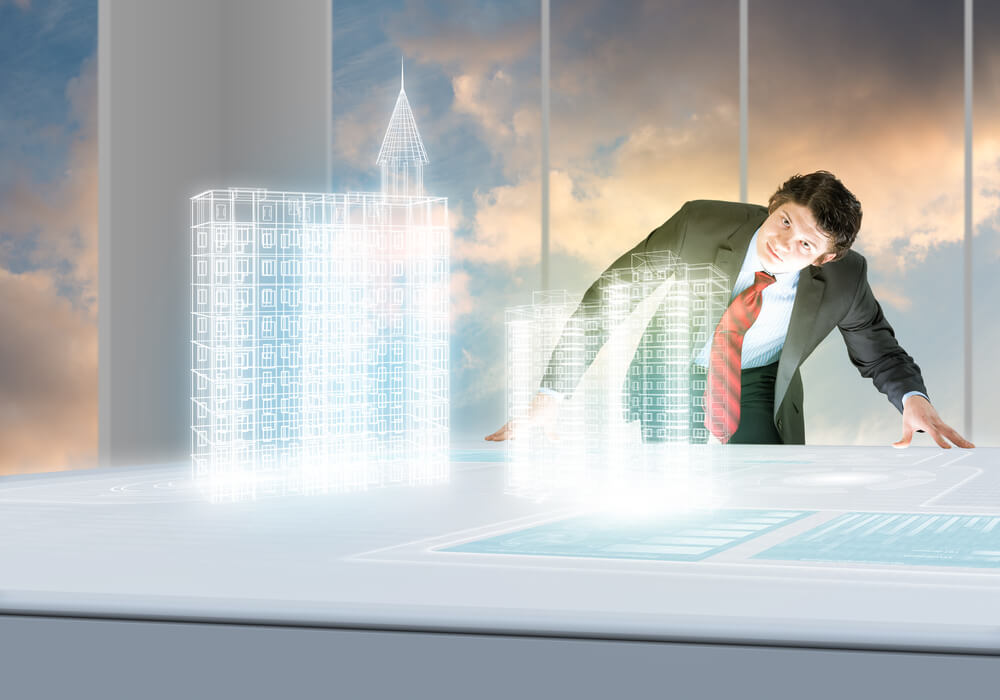Imagine an artificial world that you can observe, walk through, reach out to touch objects and see everything around you respond in real time. This is immersive virtual reality and these spaces are created using a combination of computer graphics, wireless tracking technology, headsets, HD projectors, polarised glass and more, all working together to create interactive and real-life experiences. The world of 3D virtual design and engineering is a fast growing field and there’s some seriously forward thinking happening in these fields.
Virtual reality technology has seen rapid developments in recent years and this is most apparent in the architectural, engineering and construction industry. Every design will soon be made using virtual reality; enabling the user to fully immerse himself in a 1:1-scale, 3D (BIM) model which can be manipulated and provides an incredibly accurate sense of presence in a space that’s yet to be built.
The future of architecture – unprecedented possibilities
Within five years, virtual architecture will be as convincing as the real thing. Ty Hedfan (meaning: ‘hovering house’), is a house in Wales that was designed by Featherstone Young Architects. Using plans and photos found on the Internet, Oliver Demangel, Design Director at London based 3D-imaging company IVR Nation, created a 90% accurate VR model of the house. This model shows how virtual reality will revolutionise how architects work. In the demo of Ty Hedfan, the visitor is able to open and close doors, switch the lights on and off and reposition objects. You can also change materials such as wall paper and flooring and experiment with all kinds of environmental elements such as lighting, weather and surroundings. With virtual reality, you can create a series of walk-through movies of a building, but you need a VR headset such as the Oculus Rift to really get an idea of how convincing the virtual model is. Architects who have used 3D headsets say it’s like a full immersion that completely tricks the brain. Demangel says “virtual reality will become an essential tool for architects. This technology is going to be so precise, you’re going to be like a magician. You’ll be able to change the world around you like a god. When architectural VR tech matures, it’s going be more powerful than cocaine.”
Architectural engineering made easy
Areas where construction is to take place need to be surveyed; government codes and environmental factors need to be taken into consideration. Before construction starts, the structural design of a building needs to be safe and the engineer must make sure the design accounts for movements and forces caused by external factors such as weight, wind and temperature. With virtual reality, a site can be surveyed remotely using a drone and a VR headset. This will enable the engineer to carry out a physical survey of the property or the building site. VR can help the engineer with 1:1 scale of interior spaces to survey the location of building systems such as such as HVAC (heating, ventilation and air conditioning), electrical, plumbing, fire and lightening protection as well as architectural acoustics.

Virtual reality is revolutionising construction
The construction industry is known for having very low profit margins and low levels of efficiency. Building a construction project in a virtual reality environment can be extremely useful in this industry. Within a VR space, teams are able to test out a number of stages in the building process without the cost and time factors of regular, real life testing and it will help reduce construction errors. The final structures can be rendered in 3D and the construction workers can experience and explore the space as they would in real life. Another important factor of the construction process is the fact that the viability of an architectural design needs to be tested thoroughly. Up until recently, the viability of a structure could only be tested through scale models and human judgement. As scale models can’t completely simulate the environmental factors that a structure is subjected to and human judgment can be inaccurate and flawed, virtual reality offers incredible possibilities.
Below is a list of virtual reality tools that are set to revolutionise the architecture, engineering and construction space and will completely disrupt the workflow in this industry.
Source: RICHAARD
